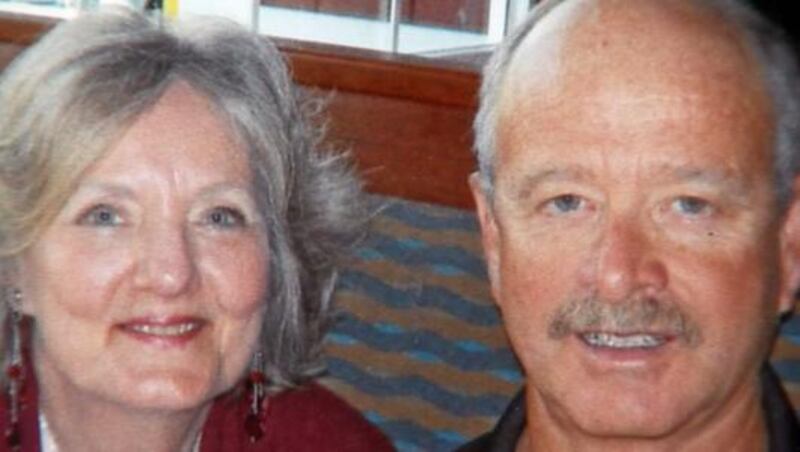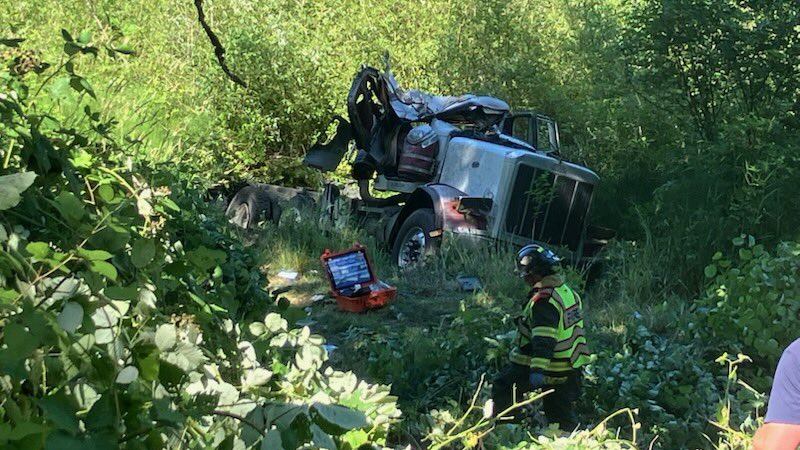Grace Burrows is filled with grief and questions.
Her husband, Walter Burrows, was killed in a construction accident in 2018 as he built Sound Transit’s light rail line to Redmond.
One night, while trying to secure a beam, he lost his balance and fell about 35 feet.
“I don’t know what happened. He went to work and he never came home,” Grace Burrows said. “You have a part of your heart missing and nothing can fill it, nothing can fill it, I’ll just have to wait til I die so I can be with him again.”
Walter Burrows died just months from retirement.
He and Grace planned to move to Montana to the home he built for them.
“We should be there right now living in our beautiful home in Montana,” she said.
Instead, Grace Burrows is meeting with lawyers after filing a wrongful death claim against 3M, the manufacturer of the fall protection device her husband was wearing.
“We believe very much so they mis-advertised the product that resulted in Walter’s death,” said Burrows’ attorney, Timothy Acker.
The complaint includes an ad for the Nano-Lok Self-Retracting Lifeline which declares it “the ultimate in fall protection for any work environment.”
“'Ultimate for every job,' well it wasn’t for this one,” Acker said.
Acker said a strap on the fall protection device severed when it went over a beveled concrete edge on the construction site.
“When he fell, it ran out, came to a stop, went back and forth a bit on the beveled edge, not a 90 degree edge but a beveled edge, it cut right through it and he fell to his death,” Acker said.
The product website does include a warning that “sharp edges must be avoided or covered over.”
The Washington State Department of Labor and Industries cited a similar warning in the instruction manual when it fined Burrows’ employer, Kiewit-Hoffman East Link Constructors, $11,200.
State investigators denied the company's claim that it selected the right equipment.
Investigators also found the contractor did not follow its own site safety and security plan which required self-retracting devices rated for leading edges and that those edges be protected with softeners.
As for the Burrows family lawsuit, 3M attorneys denied the wrongful death allegations in court filings saying the product contained “adequate warnings and instructions.”
3M court filings suggest fault might be shared by Sound Transit, Kiewit-Hoffman, and even Burrows himself.
Grace Burrows said her husband was committed to workplace safety, especially as a foreman.
Burrows’ stepson, Randy Morrow, worked for him on jobs at the SR520 and Hood Canal Bridges.
“I believe there’s a lot of people who did get to go home because of Walt’s guidance and supervision of the safety protocols,” Morrow said.
Morrow praised the safety culture at Kiewit, and said workers expect equipment to protect them.
“The fall protection equipment is rarely challenged and questioned whether this is the right application. It’s not a matter of complacency, it’s a matter of trust,” Morrow said.
The company provided a statement to KIRO 7 that reads: “3M extends its sincere condolences to those impacted by this tragic event, especially to Mr. Burrows’ family and friends. We stand behind our products and remain committed to providing high quality fall protection solutions for workers. We will not comment further on pending litigation.”
The lawsuit is in the early stages, with a trial in federal court currently scheduled for March 2021.
© 2020 Cox Media Group








